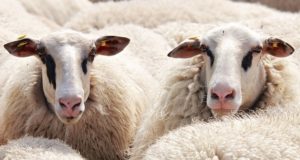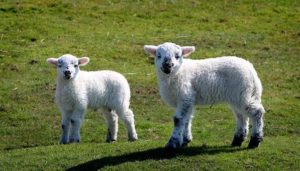Is the Woolmark label bothering you? All you want is a wool that does not sting? Here are the keys to better understand the labels of your woollen clothes. Quality labels, sheep’s wool, lamb and vicuna will soon have no secrets for you.
Whether you are looking for the softest or cheapest wool, a better knowledge of this material makes buying online more savvy and if you are family get family discount and therefore more responsible.
Quality labels
Essential to guide us in the choice of the ideal wool, the quality labels make it possible to evaluate its composition.
The label Woolmark identifies the first quality, from mowing healthy and alive animals.
The label “virgin wool” corresponds to a product to which was added 7% of other fibers maximum. This figure drops to 0.3% for the “pure new wool” label .
Finally, the label “100% wool” or “pure wool” means a wool of less quality than the others or a recycled wool.
With these labels in mind, a wide range of types of wool is offered to you, listed according to the animal from which the fiberis derived. Fiber.
Sheep’s wool

Let’s start with the most classic and widespread, sheep wool, whose ambassador could be the wool of the sheep of Scotland , known for its resistance. “This is the one used by our grandmothers to knit these sweaters a little rigid but whose thermal qualities are no longer to prove,” says Carole Doreau, Fish & Chic.
The +: resistant to moisture, solid.
The -: heavy and rough. Sensitive skin refrain.
For what garment?
Suitable for imposing pieces such as coats.
Lamb’s wool

Lamb’s wool is divided into two categories: lamb’s wool and virgin lamb’s wool . The difference lies in the length of the fibers. The lamb’s wool, with shorter fibers, will be very soft and less thick but, therefore, a little less resistant.
The virgin lamb’s wool, while keeping a soft touch, will protect from the most extreme temperatures. In both cases, the presence of natural oils in the fiber allows a resistance to water, which is not negligible to face the rainy winters.
Lamb’s wool is softer than sheep’s wool, but just as hot.
The +: water repellent, soft and very hot .
The -: none.
For what garment?
For all turtleneck clothes without fear of the appearance of itchy patches in neck.
Merino wool
Although the term “merino” is of Spanish origin, it is especially in Australia,the breed of sheep from which this abundant and comfortable wool is extracted. Particularly elastic and resistant, it is thinner than traditional sheep’s wool and does not sting . It is also antibacterial : the texture of its fiber delays the appearance of bad smells.
The +: thermo regulator, this mesh makes you feel good that it is very cold or that we run after a bus!
The -: can relax easily.
For what garment?
Its ‘second skin’ effect is the ally of sportsmen , hiking and running clothes , very suitable for children’s knitwear or, in general, for all the clothes worn on skin like a dress or a twin-set. ”
The alpaca
As its name suggests, it comes from the mowing of the alpaca, a mammal of the family of camelids that lives mainly in the Andes . The result is a very precious fiber, soft but strong, lighter than sheep’s wool.
The +: sweetness.
The -: its rarity and therefore its price. An alpaca produces only two to three kilos of hair a year.
For what garment?
Perfect for making suits for men.
Mohair and kid mohair
Distinguish the goat angora which allows to obtain the mohair wool or kid mohair – according to the age of the goat – the angora rabbit with which one produces the so-called “angora” wool. The fur of the angora goat, long and curly, gives a warm and light knit. Easy to dye, it is of excellent hold even when you choose to knit loose and airy. Mohair will be the sweetest of the two.
The +: swelling and soft, do not felt.
The -: lack of elasticity and risk of scratching!
For what garment?
The over-sized sweaters, as we liked them in the 1980s.
The angora
Angora wool is therefore produced with the long and silky hair of the Angora rabbit , but sometimes also yak or angora sheep . It is harvested by shearing or combing. Less aerated than the mohair, it is a noble wool and a heat indisputable but which will have a tendency to lose its hairs , I use it seldom because it is not very pleasant to knit.
Brands are turning to less and less use of Angora rabbit wool due to Chinese methods of extraction that are all too often unreliable.
The +: sweetness and warmth.
The -: due to cruel harvesting some brands say no to angora wools.
For what garment?
Its use is very close to that of mohair: soft sweaters but willingly closer to the body.
The vicuna
It is indeed an even rarer product than cashmere, as it is already less available than wool. After having stopped production in the 1970s – under the threat of extinction of the species – its trade has been released again since 2002, but regulated and regulated.
The wool of the vicuna is famous for its softness and extreme rarity. That’s why one should look for look for discount codes in relevant websites such as Deals4Boomers while buying online.
The +: refinement and functionality: ultra comfortable thermal qualities.
The -: its extreme rarity is felt on the purchase price.
For what garment?
“The exceptional quality of this product inevitably directs it towards luxury pieces and employee get discount, and is used by fashion houses for making coats, among other things.”
Cashmere
The cashmere fiber is very thin, it takes thousands to get a thread so fragile that later, it will be necessary to twist the son by two for more strength. It is the quality of these fibers, preferably fine and long, which will determine that of a sweater. The number of threads – up to 24 – tells us about the thickness of the knit. Variations will also have an impact on the price of the product and its resistance, the more yarns with discount, the higher they are.
The +: warmth, softness, lightness (cashmere is ten times lighter than wool).
The -: even good quality, it often tends to pilling .
For what garment?
Cashmere suits all styles of clothing.








